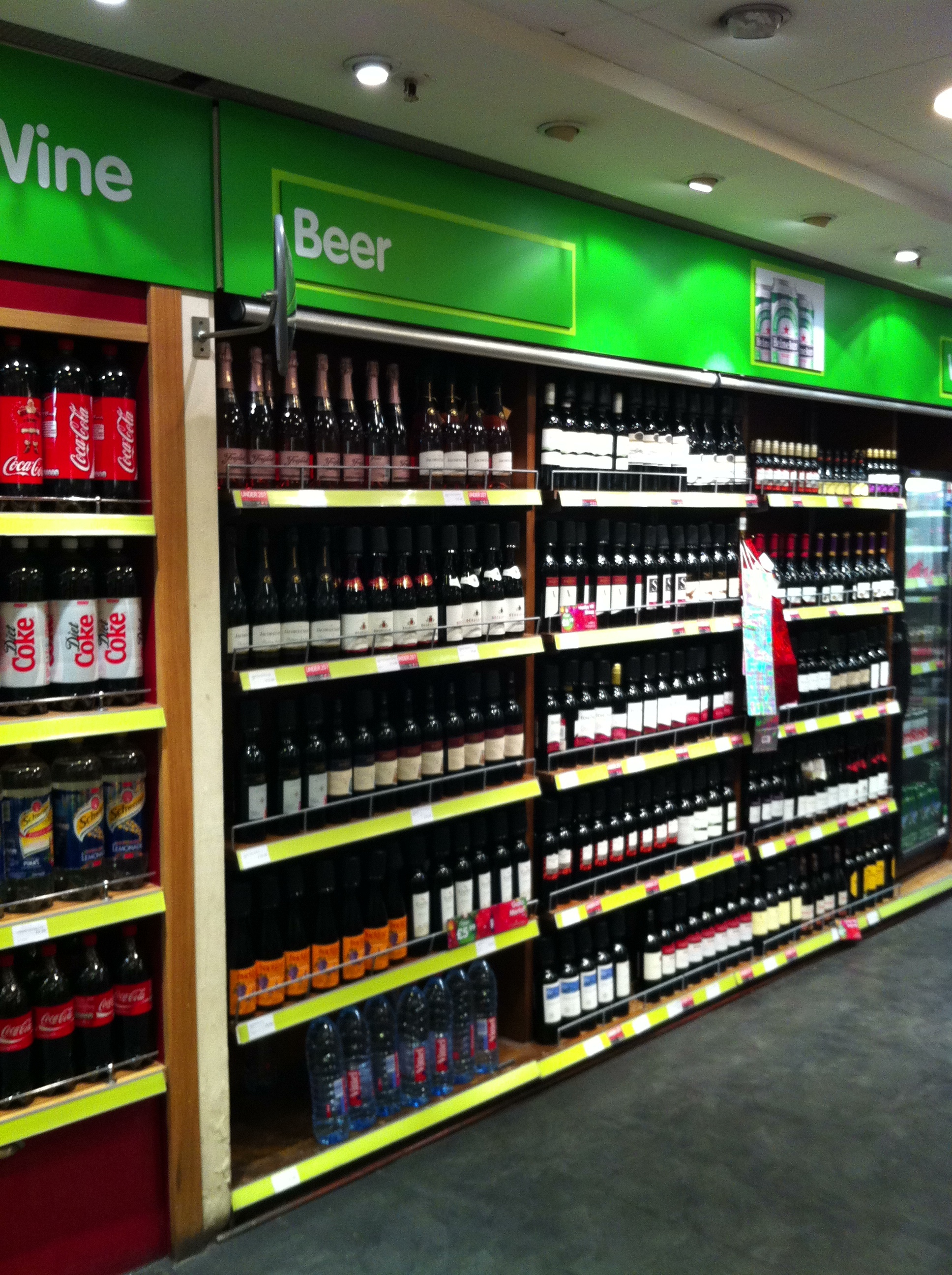I read a neat article from the HBR recently – which argued the point that great marketing works when brands start helping them make purchase decisions. The article uses Amazon and its reviews approach to make the point, but it got me thinking about shopper marketing and whether this was a relevant point beyond environments such as Amazon.
The stores most consumer brands inhabit are, unfortunately, often far from helpful. Overcrowded shelves, packed with too many products: deals and promotions on up to 40% of the merchandise which makes it harder for the shopper to see everything and harder to decide: products out of stock, merchandised incorrectly: signage banished by clean store policies or simply out of date (can you see the beer in the image below? No, nor me). The average supermarket seems to do very little to help shoppers make a purchase decision.

The much lauded concept of shopper solutions, promoted by Booz & Co in their report and best epitomized by meal solutions, or cola and chip sports-themed gondolas, could be argued to go some way to by helping shoppers. But is this helping them make a decision, or bypassing the decision all together? After all, the shopper is encouraged, in a way, not to evaluate, but to jump to purchase. I’m not sure that this is what Jeff Bezos has in mind. Shopper Solutions, when looked at this way, start to look a lot like selling.
And that brings me to a case study I often present in workshops or seminars. I present it because it is simple, surprising, and yet obvious, and demonstrates that great shopper marketing isn’t always about big and loud . On reflection (and thanks to David Boon for sharing this article with me) – the thing that makes this so special, is that it is a classic example of helping shoppers make an informed purchase decision.
The case is simple: the category is kid’s milk; the problem is that as kids get older, moms (the shoppers) switch brands and trade down. It costs both premium brands and retailers millions. After a lot of research we identified which shoppers traded down, and dissected their decisions. For many, the decision happened in-store, and was based on the information gleaned from the packaging. Now if any of you have read the back of a milk formula pack will know that it’s far from transparent. Moms checked packs, saw that as far as they could tell the products were all similar, and so they bought the lower priced product.
The solution to this lay not in leaflets, product consultants, or in-store media, but in merchandising. Historically in this market product had been blocked by the age of the child (all milk for 0-6 month kids together, etc.). From a consumer perspective this was totally logical, but when it came to choosing a milk brand, this was a disaster. All products which are age suitable are grouped together. The nutritional information on the pack is impenetrable: all that is left for a shopper is to decide on price. The solution? Move the cheaper milk away from the premium stuff.
Now the big misunderstanding here is that, at first blush, we’re making it harder for the shopper to choose. Milk she could use for her child is now dispersed across the fixture. But by focusing her choice on products which gave similar benefits (premium versus economy) we helped her decide. If she wanted basic product it was there, but moms in the habit of buying premium milk stuck with it. Not because they couldn’t find the cheaper milk, but because they wanted premium milk. Those that wanted economy product – it was there and easy to find.
Helping shoppers requires some precursive fundamentals:
- Know what shoppers are trying to achieve. This should almost go without saying, but you can’t help someone unless you understand what they are trying to achieve. Understanding a shoppers’ mission requires an understanding of both their needs as a shopper and the consumption needs that they are trying to satisfy.
- Understand how they make decisions, and where things go wrong. Understanding the shopper’s journey to purchase, what decisions are made where, and focusing on the blockages, or pinchpoints, will help your shopper marketing be more focuses, efficient, and effective.
- Look for alignment between what shoppers what and what you want. Lest we forget we’re not doing this out of the good of our hearts, nor can we help everyone all of the time. Focus resources where there is a strong alignment between what shoppers want or need, and what you want shoppers to do. Focus on your target shoppers. If it doesn’t deliver the right outcome for them, then they’ll ignore you next time. And if it doesn’t pay back to you, well……..
Helping shoppers isn’t always about packaging a ready-made solution. Helping them make a decision is about helping shopper navigate their decision process, not forcing your brand upon them. Of course, if you really understand shoppers, and have built a brand which meets their needs and the needs of the consumer, then their decision making process will lead to your brand anyway. If you have to coerce, then your brand has a fundamental problem. Perhaps it’s time to address that.




